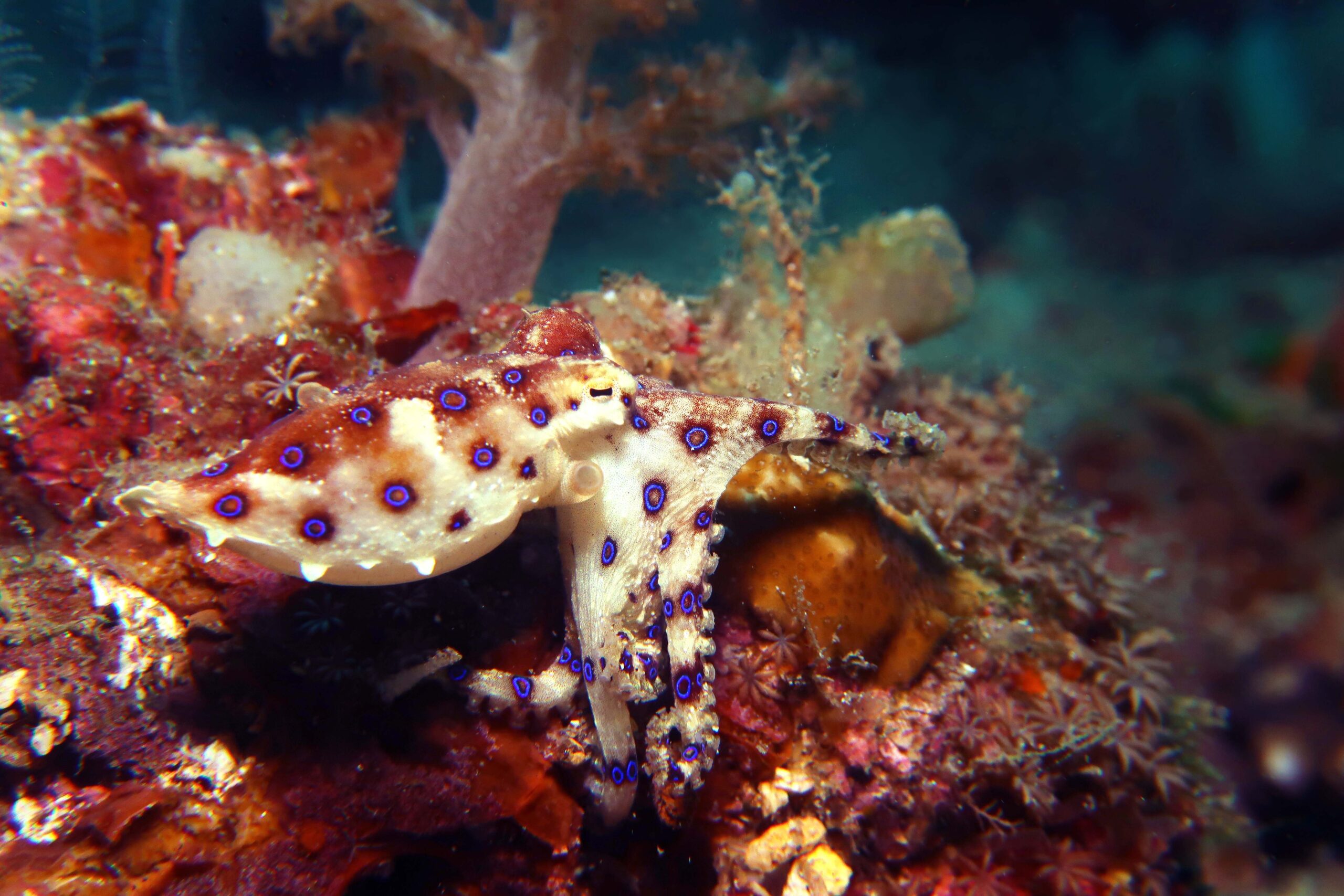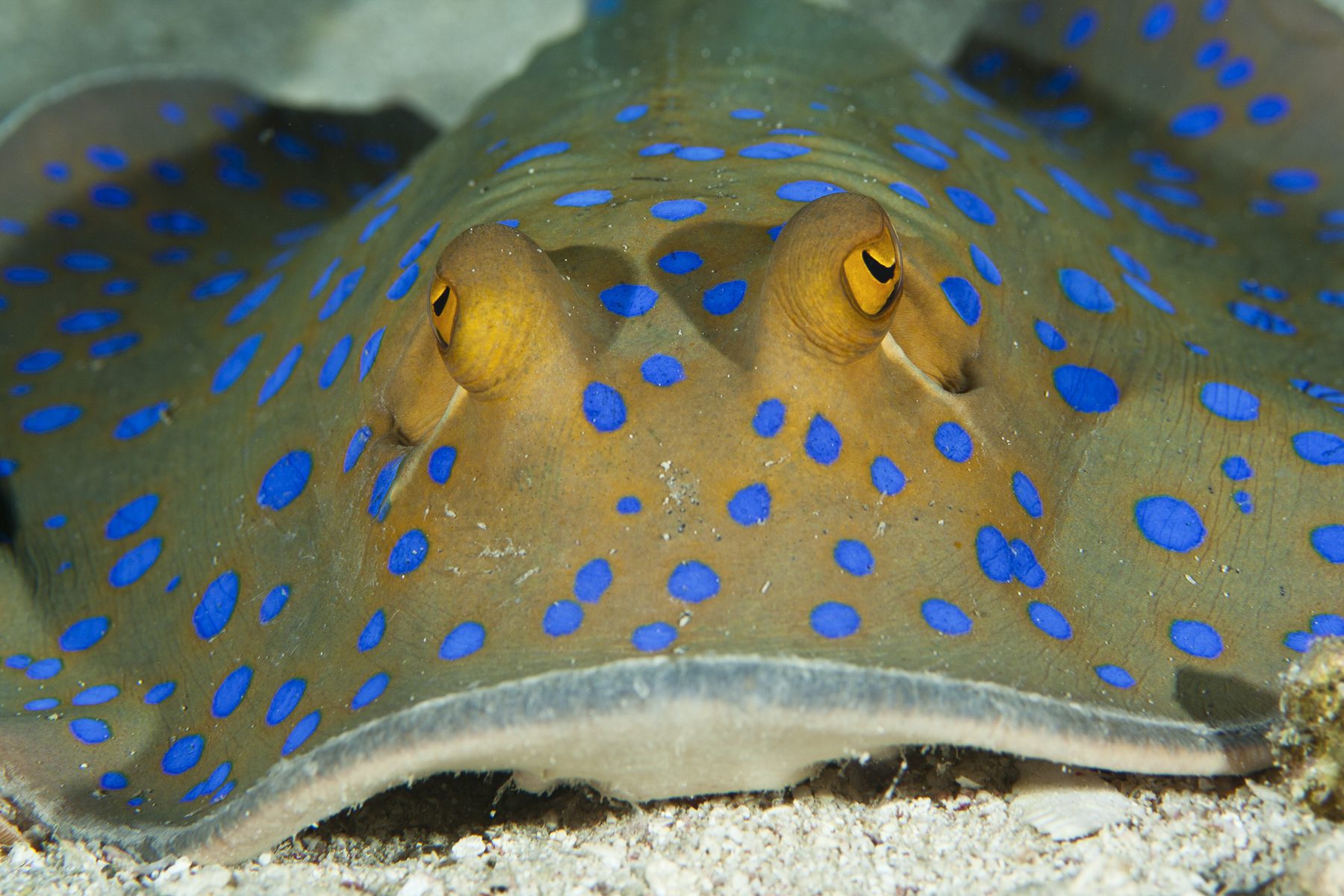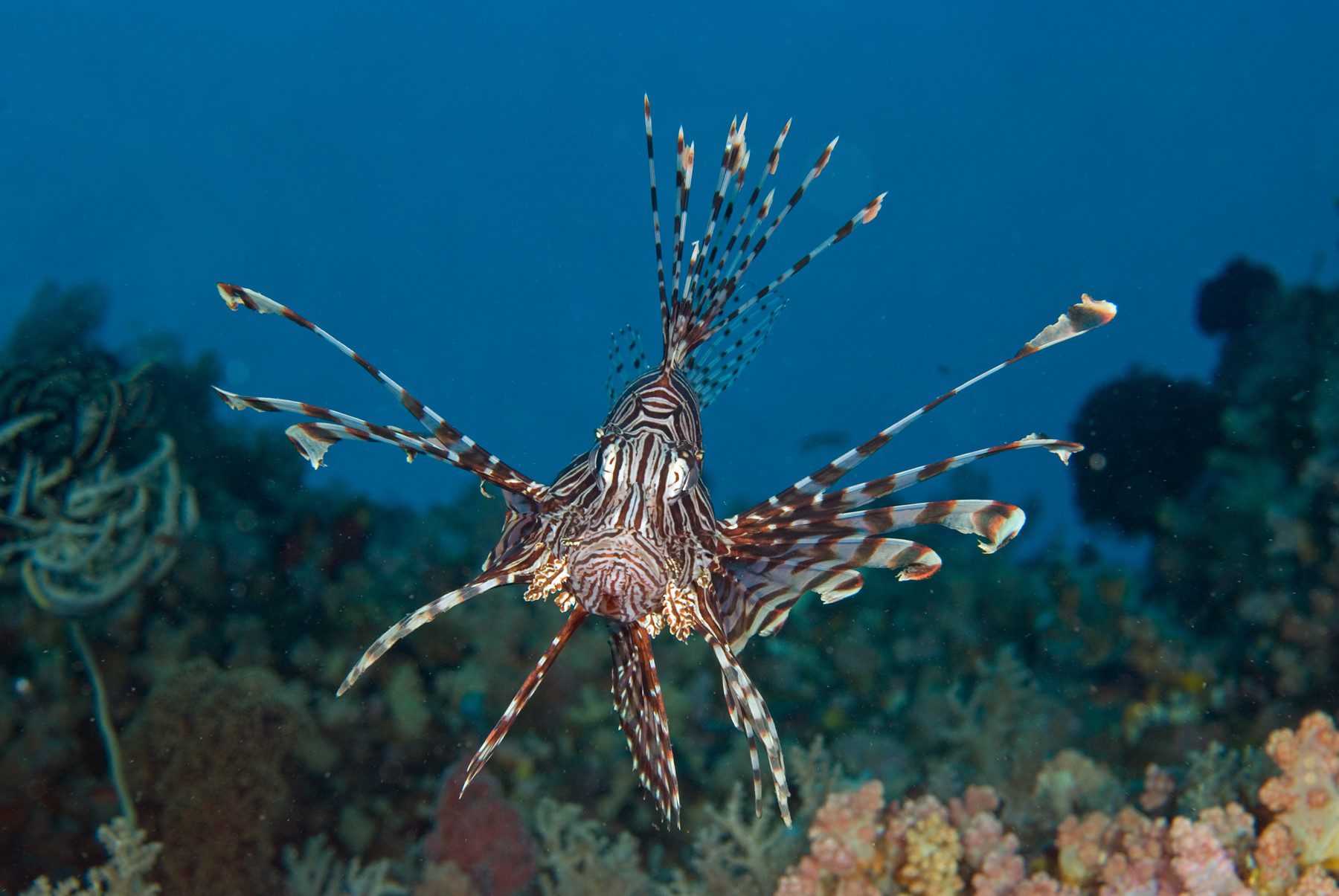Discover the Venomous Sea Creatures Found in Bunaken, Manado, and Bangka
|October 19, 2023
North Sulawesi is renowned for its impressive diversity of fascinating marine life. Most species are not dangerous and incredibly docile, but there are a number of species equipped with impressive defence mechanisms, like venom. In this Blog we take a look at some of these venomous sea creatures in more detail!
Sea Snakes (Banded Sea Kraits) – Laticauda colubrine
The beautiful banded sea krait is potentially one of the most venomous sea creatures found in Bunaken, Manado and Bangka. They are most commonly spotted with their heads in the reef while hunting for prey. This species is exceptionally docile and will gracefully swim away from divers when approached.
The number of recorded bites to humans is extremely low. Most cases have occurred when seaweed farmers have accidentally picked up a krait while harvesting their crops at low tide, or when fishermen have tried to remove them from nets.
Despite their docile nature, the banded kraits venom is 10 times more powerful than that of a rattlesnake. The venom attacks the nervous system of the victim and can result in convulsions, paralysis, cardiac failure and even death. Each krait can produce up to 10 – 15mg of venom. Only a fraction of the amount produced will result in a lethal dose.
Blue Ringed Octopus: Hapalochlaena lunulata

The blue-ringed octopus is a tiny yet undeniably stunning cephalopod. When they are alarmed or sense an apparent threat, they will flash the iridescent bright blue rings that cover their body and arms. It is these rings that make them an attractive underwater photography subject and they allow photographers to have extremely close up encounters. Reports of blue-ringed octopus bites to humans are extremely low and usually only occur when there have been attempts to handle them.
Blue-ringed octopus have symbiotic bacteria in their salivary glands that produce tetrodotoxin (TTX). This substance is potently neurotoxic – meaning it blocks the transmission of nerve impulses. This stops muscles from being able to contract and has potentially deadly consequences.
Some reports state that TTX is over 1,000 times more toxic than cyanide and the blue-ringed octopus carries enough venom to kill 26 adult humans within minutes.
Stonefish – Synanceia verrucos

Despite growing to over 40 cm in length, the reef stonefish is not easy to spot. It has exceptional camouflage that gives the appearance of a stone or rock (hence the name). Like scorpionfish and lionfish, stonefish are well known as venomous sea creatures with their potent venom. The venom is located in their 13 dorsal spines, each of which has two venom sacs.
It is the stonefish’s incredible camouflage that adds to its deadly nature. Stonefish cannot use these spines as weapons, however they are extremely effective for defence purposes. The spines are extremely stiff and sharp and if they are stepped on they can pierce the sole of a shoe or reef booties with ease.
The reef stonefish is often cited as being the most venomous fish on the planet and the venom is powerful enough to be lethal to humans. If stung, the effects of the venom will begin almost immediately. The victim will feel severe pain, shock, extreme nausea, and localised tissue death. Professional medical care is highly recommended.
Blue Spotted Ribbontail Rays: Taeniura lymma

Blue spotted ribbontail rays are common in all three of our locations – Bunaken, Manado and Bangka. They are a striking looking ray covered in bright blue spots on their olive-colored body. They have beautiful tails that end in a ribbon-like fan, underneath which, there is a barbed stinger.
These stingrays spend the majority of their time foraging or partially buried beneath the sand. They use electroreception to help locate prey, picking up on subtle temperature differences and electrical fields generated by other animals in the sand.
This species prefers ‘flight’ rather than ‘fight’, however if they are cornered they will lash out with their barbed tails and deliver a sting that can be fatal. If stung by a ribbontail ray, one of the challenges is removing the barb, which must be done with care and is best carried out by a medical professional.
Demon Stingers (Spiny Devilfish) Inimicus didactylus

Inimicus didactylus, also known as demon stingers or spiny devilfish, are closely related to the stonefish. Their bodies can reach up to 25 cm and it covered with irregularly placed venomous spines. Demon stingers often dig themselves into the sand – which adds to their dangerous nature as they cannot be clearly seen.
If stepped on, their spines will deliver a venomous sting which can be fatal if not treated immediately.
Lionfish: Pterois sp.

In North Sulawesi we have numerous species of lionfish with the most common species being the common lionfish (Pterois volitans). Lionfish are extremely beautiful and Lionfish have distinctive brown or maroon, and white stripes or bands covering the head and body. They have fleshy tentacles above their eyes and below the mouth; fan-like pectoral fins; long, separated dorsal spines; 13 dorsal spines; 10-11 dorsal soft rays; 3 anal spines; and 6-7 anal soft rays. An adult lionfish can grow as large as 18 inches, while juveniles may be as small as 1 inch or less.
The spines of this species deliver a venomous sting that can last for days and cause extreme pain, sweating, respiratory distress, and even paralysis. Lionfish venom glands are located within two grooves of the spine. The venom is a combination of protein, a neuromuscular toxin and a neurotransmitter called acetylcholine (pronunciation: ah-see-toe-coe’-lean). After the spine punctures the skin, the venom enters the wound when exposed to the venom glands within the grooves of the spine. If you are stung by a lionfish, seek medical attention immediately.
Discover Venomous Sea Creatures and Stay with Us!

Are you dreaming about diving the Bunaken Marine Park and seeing these venomous sea creatures with us while staying at Murex Manado? Get in touch and email your enquiry to: reservations@murexresorts.com. We are looking forward to welcoming you to North Sulawesi soon!
Further Reading
If you enjoyed reading this article, you may also be interested in some of the following…
- Unveiling the wonders of marine mammals: a comprehensive guide
- Stay safe and sound underwater: essential scuba diving safety tips
- Ultimate guide to crustaceans of north sulawesi
The post Discover the Venomous Sea Creatures Found in Bunaken, Manado, and Bangka appeared first on Murex Resorts.